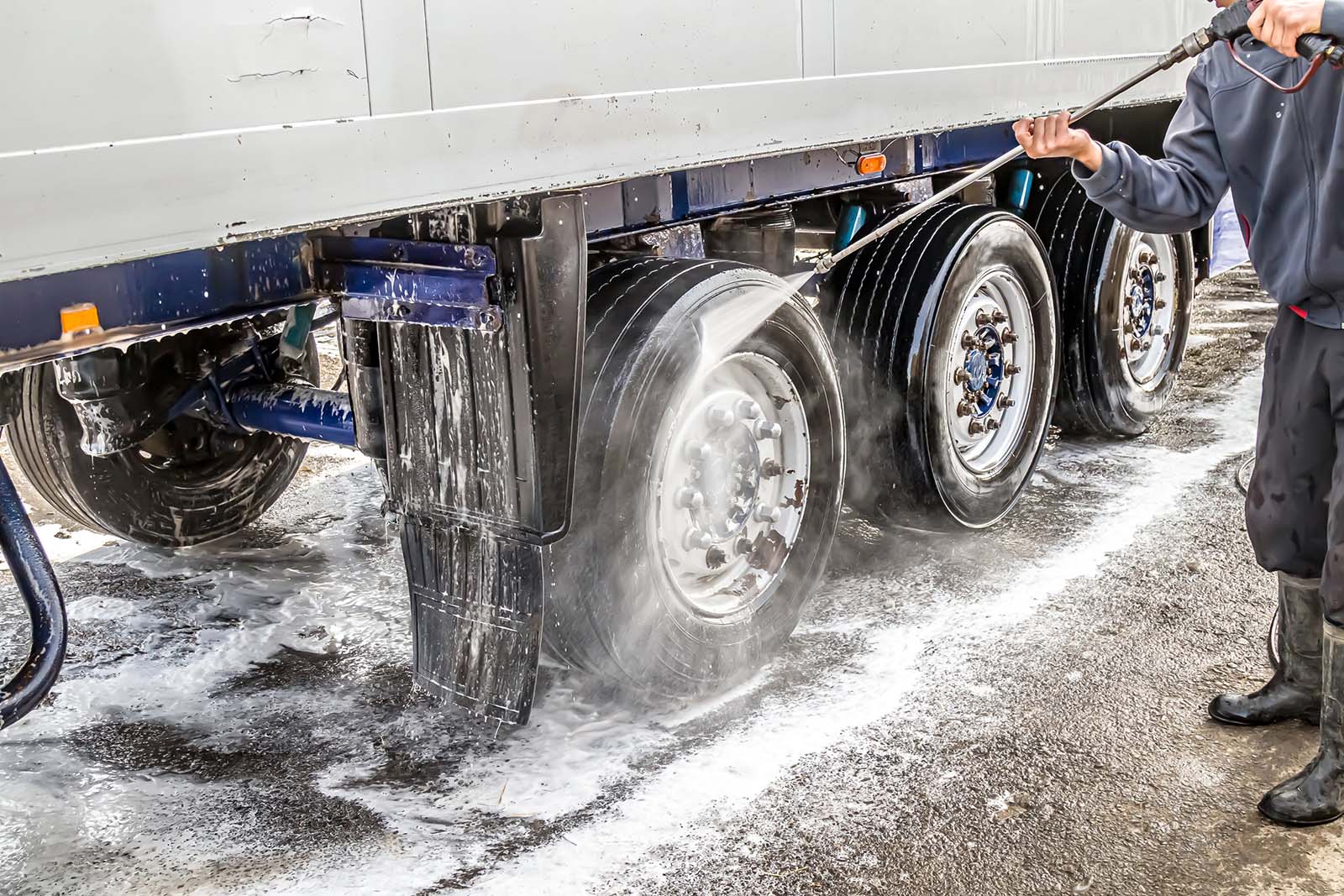
As a power washing business owner, it’s smart to look for ways to grow your revenue beyond residential driveways and house siding. One often-overlooked but highly profitable niche is fleet cleaning — and it could be your ticket to more consistent income, high-ticket contracts, and long-term clients. 💰🔁
Fleet washing involves cleaning commercial vehicles like delivery vans, trucks, buses, or service cars. These vehicles are moving billboards for a company’s brand — and nobody wants their logo driving around covered in grime. That’s where you come in. 🧽✨
In this article, we’ll explore what fleet cleaning is, why it’s profitable, what you need to get started, and how to win fleet washing contracts.
🚚 What Is Fleet Cleaning?
Fleet cleaning is the routine washing of multiple vehicles owned by a company or organization. These vehicles could include:
- Delivery trucks
- Semi-trailers
- Buses and shuttles
- Utility and service vans
- Municipal or government fleets
- Construction or landscaping vehicles
Businesses with large fleets often require weekly or bi-weekly cleaning to maintain a professional image and comply with regulations. That means recurring work for you. 🧼🔁
💵 Why Fleet Cleaning Is a Smart Add-On
Here’s why adding fleet cleaning to your services can be a game-changer:
1. Recurring Revenue
Fleet contracts often involve weekly or monthly cleanings — which provides stable income you can count on, even during slower residential months.
2. High Volume
You may clean 10–100+ vehicles at a time. This means you earn more per job — without the need to book dozens of individual customers.
3. Commercial Clients = Less Hassle
Businesses understand the value of clean vehicles. They’re often easier to work with, and there’s less emotional nitpicking compared to residential work.
4. Less Seasonality
Fleet cleaning continues even in colder months when homeowners might pause exterior cleanings. ❄️🚚
🛠️ What You’ll Need to Offer Fleet Washing
✅ Equipment
Fleet cleaning requires some upgrades from your standard house-washing rig:
- Hot water power washer: Helps remove grease, oil, and road grime
- High GPM (Gallons Per Minute) machine (4+ GPM recommended)
- Telescoping wands or brushes to reach taller trucks and trailers
- Water reclaim system (especially for EPA compliance on pavement jobs)
- Surface cleaner for cleaning parking areas or truck bays
🧴 Detergents
Use vehicle-safe soaps and degreasers designed for:
- Painted metal
- Glass
- Aluminum
- Rubber seals and plastic trim
Avoid overly harsh chemicals that can damage decals or finishes.
💧 Water Source
Some fleet clients may allow you to hook into their water, while others will expect you to bring your own. A water tank (200–500 gal) may be necessary for off-site jobs.
Browse Amazon Here For Commercial Pressure Washers And Accessories
📋 Legal and Environmental Considerations
Fleet cleaning often falls under EPA Clean Water Act regulations, especially if you’re washing outdoors on paved surfaces.
- 💧 You may need to capture wastewater using reclaim mats or vacuums
- 🚫 Never let soap runoff enter storm drains
- 📝 Check with local or state regulators for water discharge permits or compliance
You should also ensure:
- General liability insurance covers commercial property
- You have commercial auto insurance if towing a trailer
- You’re using OSHA-compliant gear for safety
Being compliant isn’t just smart — it makes you more appealing to corporate buyers. ✅
🔍 How to Find Fleet Cleaning Clients
Here’s where to start looking:
🏢 Local Businesses
- Delivery companies (Amazon, FedEx contractors, etc.)
- Construction or landscaping firms
- HVAC, plumbing, or electrical service vans
- Pest control companies
- Catering or food delivery fleets
🚌 Government & Transit
- City buses
- School districts
- Public works vehicles
- Police or fire fleets (with proper background checks)
🚚 Trucking & Logistics
- Freight companies
- Truck stops or depots
- Rental vehicle lots (e.g., U-Haul, Penske)
💡 Pro Tip: Drive around your town and take note of businesses with branded vehicles. Reach out with a short pitch and pricing sheet.
📈 How to Price Fleet Cleaning Services
Pricing depends on:
- Type and size of vehicle
- Number of vehicles
- Frequency of cleaning
- On-site vs. off-site service
- Use of hot water or reclaim system
Typical pricing range:
- Light vans: $30–$50
- Medium trucks: $50–$75
- Semis or box trucks: $75–$120
- Buses or large vehicles: $100–$150+
Offer volume discounts and monthly contracts for better retention. 🧾
🧠 Tips for Success in Fleet Washing
- Be fast but thorough — time is money in commercial work
- Offer after-hours or weekend service to avoid disrupting operations
- Use water-efficient systems to speed up rinsing
- Track your jobs and results with photos or logs
- Build a branded uniform or fleet-cleaning crew for professionalism
- Always show up on time — reliability is gold to business clients ⏰✨
💬 Final Thoughts
Expanding into fleet cleaning isn’t just a side hustle — it’s a solid, scalable revenue stream that can stabilize your power washing business and take it to new heights.
It might take a bit more equipment and effort up front, but the payoff is well worth it: higher-paying clients, long-term contracts, and consistent work year-round. 💪📅💼
So gear up, reach out, and start cleaning those rolling billboards. The next fleet you wash could be your biggest client yet! 🚛🧽💸
Browse Amazon Here For Commercial Pressure Washers And Accessories






